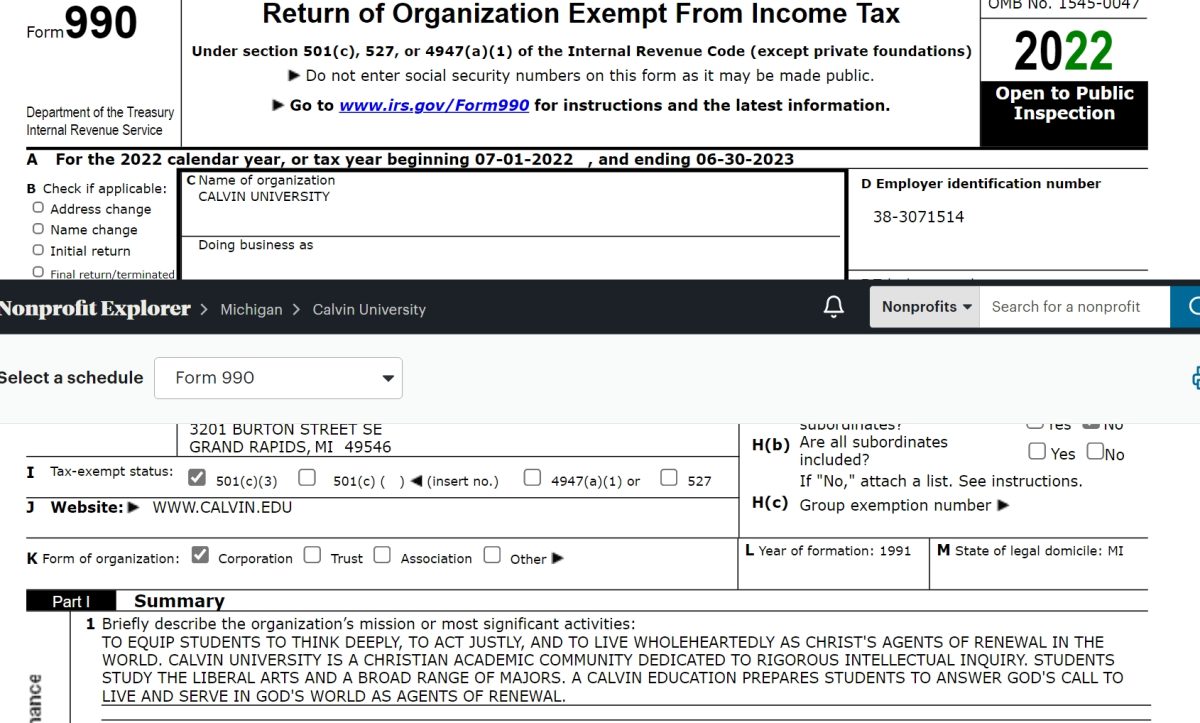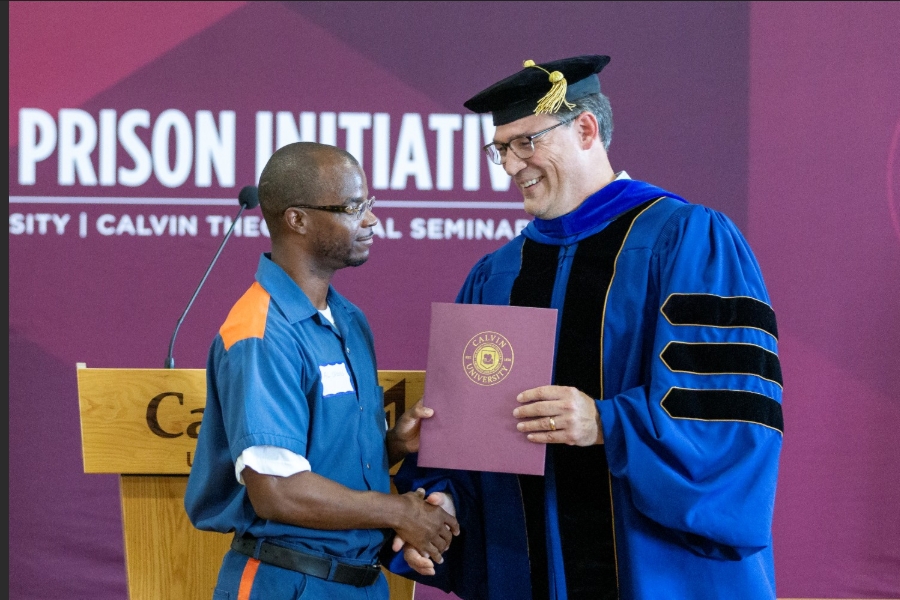Without corrective action, Calvin is headed for a $10 million budget deficit in the 2024-2025 fiscal year, according to information shared at a faculty town hall on Feb. 11 by Dirk Pruis, vice president for finance and chief financial officer.
Pruis emphasized significant “headwinds” facing Calvin in the next few years, including what’s known in higher education as the “demographic cliff” — a drop-off in the number of children nationwide turning 18 every year. “This fall is going to have the lowest number of 18-year-olds in a generation,” Pruis said. To continue meeting enrollment targets, Calvin will have to “take some significant [market] share,” he said.
Calvin’s Board of Trustees (BOT) has final approval power over the university budget. For fiscal year 2024-2025, the BOT approved a budget which included $5.4 million dollars in planned overspending. This move was part of a strategy university leadership adopted in 2022 that Pruis and others have called “invest to grow.” The strategy involved investing in programs and infrastructure with the goal of boosting enrollment. Pruis told Chimes in an email that this strategy included new academic offerings like music education, new athletic programs like football and updated facilities like the Hekman Library. In some ways, that strategy has worked. “We’ve got momentum,” Pruis said at the town hall.
However, if current spending trends continue, Calvin is on track to miss the 2024-2025 budget target by approximately $4.5 million. In combination with the planned $5.4 million deficit, the unplanned overspending puts the university at a total deficit of about $10 million for the year, according to Pruis.
Lower-than-expected revenues in some areas contributed to the revenue miss. On average, Pruis said, students got smaller meal plans than the administration estimated, leading to a revenue shortfall from the dining halls.
Another area where earnings were weaker than expected was in Calvin’s graduate programs. Pruis highlighted graduate programs as a key area where revenue was lower than projected this fiscal year. According to Provost Noah Toly, graduate tuition is one of the biggest sources of revenue in the academic division. Estimating revenue from graduate programs depends on having accurate enrollment estimates for those programs.
“Sometimes we have not been that good at projecting what the revenue will be,” Toly said regarding graduate programs. “You can’t generally crank that up — not just the tuition, but the enrollment — in the middle of the year.”
Pruis told Chimes in an email that marketing efforts are currently focused on increasing visibility to ensure graduate programs are viable long-term.
“If a program consistently underperforms despite strategic efforts, we assess how it fits within our broader institutional priorities and prune programs as needed,” Pruis said.
The financial reality for Calvin isn’t likely to get more comfortable anytime soon. Even if the university manages to bring spending into line so that there is only the planned $5.4 million deficit target for fiscal year 2025, it will have to contend with a “strong mandate” from the BOT to achieve budget neutrality during fiscal years 2026 and 2027, Pruis said at the town hall.
“When you boil it down, the core question is: how do we deliver on a bigger vision for more students with a smaller budget footprint?” Toly told Chimes. Some of those strategies aimed at boosting efficiency include only running class sections with more students in them. Toly said choosing not to run course sections with few students “translates into a better ratio of the number of dollars those students bring into the experience, with the number of dollars we’re spending on the instruction.”
While those moves may have a significant impact long-term, more immediate action is necessary to bring spending in line with the 2025 target. In September, all of Calvin’s academic departments were asked to underspend their proposed budgets by 10% this year.
At the town hall, Pruis said that the main roadblock on the journey toward the 2025 budget goal is overspending in the academic division.
“We’ve still got to find $700,000 in the academic division between now and the end of the fiscal year … To be very, very blunt, we have to cut spending. All the other divisions so far have hit their spending reduction target,” Pruis said.











